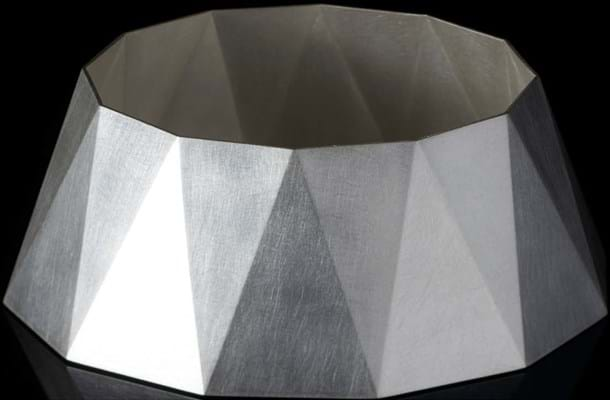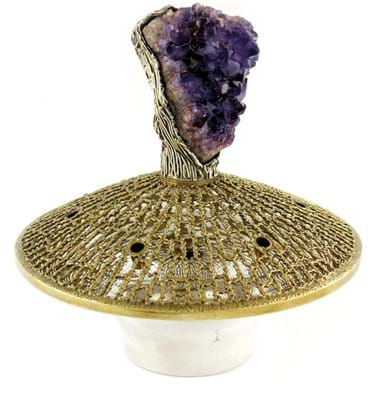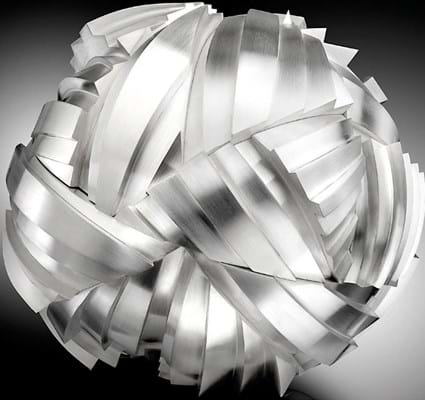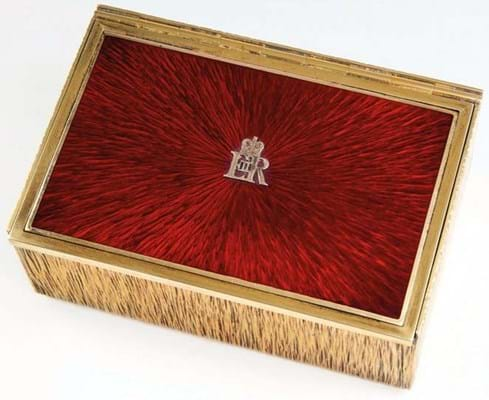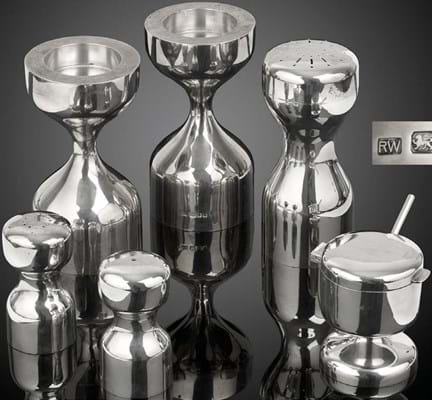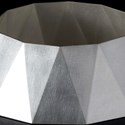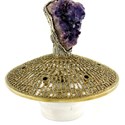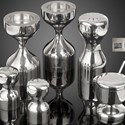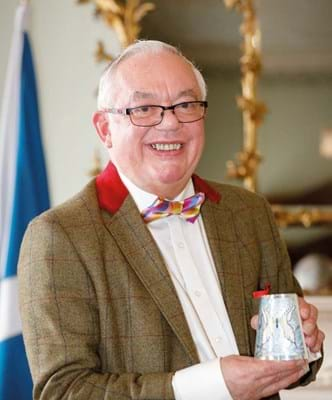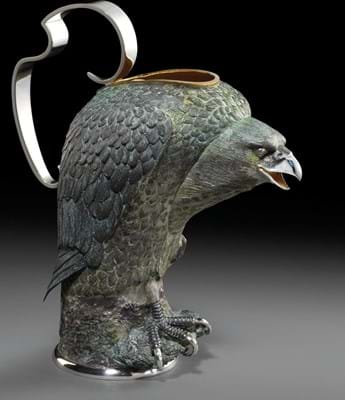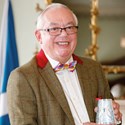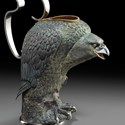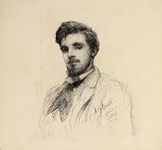“It is, I think, the first big breakthrough I have had.”
John Andrew, evangelist for British post-war silver, is taking pieces from the largest assemblage of its type in private hands to the most populous state in the US.
For nine months from July 2018, elements of The Pearson Silver Collection, a vast archive of designs and makers that changed the look of English silver forever, will be exhibited in 20 cabinets at the SFO Museum at San Francisco’s international airport.
With a footfall counted in the millions, this will be the biggest-ever exposure of UK silver to an international audience and the largest-ever exhibition of its kind in the US.
It was on the recommendation of New Yorker Margo Grant-Walsh, erstwhile owner of close to 4000 pieces of worldwide 20th century silver, that curators from the SFO visited London in August to see the Pearson Collection laid out in its entirety, maker by maker, at the Goldsmiths Centre. Their answer was ‘yes please’.
Andrew continues to add to the collection both at auction, across all post-1945 periods, and through contemporary commissions. The latest acquisition is a remarkable chased and chemically patinated raptor jug by Anthony Elson (b.1935).
Three men in their 80s produced the piece: the silversmithing by Norman Bassant (apprenticed at RE Stone in 1947), the chasing and repoussé by Richard Price (apprenticed at CJ Vander in 1949) and the patination by Elson.
Andrew estimates a replacement would cost in the region of £15,000.
“A lot is happening in the post-war British silver market,” he says.
He references a Gerald Benney presentation box sold for €40,000 in Germany and a contemporary sculptural piece sold for £58,000 at Bonhams. The recent Goldsmiths Fair (September 26-October 8) was also a success.
“But is modern silver booming? The answer is no,” says Andrew.
He maintains that, despite a growing band of adherents – “often those without a penchant for the antique” – the mini-golden age of British silversmithing remains “a well-kept secret”.
There are a handful of Dutch and American buyers, and followers of Stuart Devlin in Australia, but international interest is the exception rather than the rule.
Elements of the Pearson Collection were displayed, largely in chronological order, at Edinburgh auction house Lyon & Turnbull in November 2016 titled A Design Discovery: Great British Silver 1940- 2016. “We had no idea that Britain produced such fantastic silver” was a typical response from overseas visitors.
“Prices still don’t reflect rarity,” says Andrew. “No one knows how much was melted down when bullion prices peaked in 1980 and again in 2011.” Gold objects in particular from this period are still vulnerable to changes in scrap value.
The market also remains very brand conscious, although Designer British Silver, the now standard work on the subject co-authored by Andrew with Hungerford dealer Derek Styles in 2014, has done much to shed light on a raft of talented makers whose surnames don’t yet resonate beyond the cognoscenti.
Benney’s bark
Benney and Devlin remain the gold standard. The silver gilt and enamel box to which Andrew referred turned up at Auktionshaus Stahl in Hamburg on September 30.
At 4in (10cm) across, it combines the bark-effect texturing and enamelling for which Benney is best known and, as well as the assay mark (AGB, London, 1977), the underside is also stamped Gerald Benny London and AAE for the enameller Alan Alfred Evans.
Evans, who trained under Norwegian Berger Bergensen, took several years to master the craft but ultimately refined the art, enamelling larger surface areas than Carl Fabergé.
As suggested by the monogram of Elizabeth II, the box was given by the queen to former West German chancellor Helmut Schmidt in 1978. Offered among other diplomatic gifts owned by Schmidt, it had been estimated at €3500.
Andrew believes this is the first of Benny’s Elizabeth II presentation boxes to come to market (those presented by the Prince of Wales are more common), but this price was swelled by the celebrity factory and akin to some of those achieved by post-war silver in the Princess Margaret sale.
It is nonetheless probably a record for a Benney silver box and only a handful of gold objects have made more.
The Pearson collection acquired a gold, boulder opal matrix and enamelled oval box (London, 1972) for £30,000 as part of the Benney family reserve collection sold in 2010 when a gem set gold ‘stirrup’ cup and cover (London 1967) took £50,000.
Perhaps a more representative example of status quo in the Benney market was provided by the selection of relatively modest pieces offered by Bonhams Knightsbridge as part of its September 27 Decorative Art and Design sale.
From the Gerald Benney family archive, a pair of silver and white enamelled beakers marked for London, 1973 and for Evans which sold at £1200.
“Gerald Benney and Stuart Devlin remain the gold standard in modern silver
Museum to saleroom
All pieces from the V&A’s recent contemporary silver show Silver Speaks: From Idea to Object went from exhibition cabinet directly to this Bonhams sale. It was the first time this had been tried and only a handful of pieces made the jump – although many more did get close.
The lots sold in the room included Kevin Grey’s Animus sculpture that has become an instant classic.
Grey moved from the world of the luxury automotive industry to silversmithing in 2007. He has since won the Goldsmiths’ Company Award three times for his fusion of cutting edge modern technology such as laser welding with traditional silversmithing techniques.
Animus (Birmingham, 2015) is a highly complex work, hand-fabricated from silver strips and formed in two parts with a diameter of 12in (30cm).
Such brilliance does not come cheap. It was estimated at £58,000- 62,000 and was sold at the low estimate to an American collector of design. With premium added the price is very close to retail.
A 12:24 geometric faceted form vessel by the Anglo-Canadian silversmith Mary Ann Simmons was also well received. A precision mathematical form constructed from two single flat sheets of Britannia standard silver hallmarked for London 2016, it took £8000.


